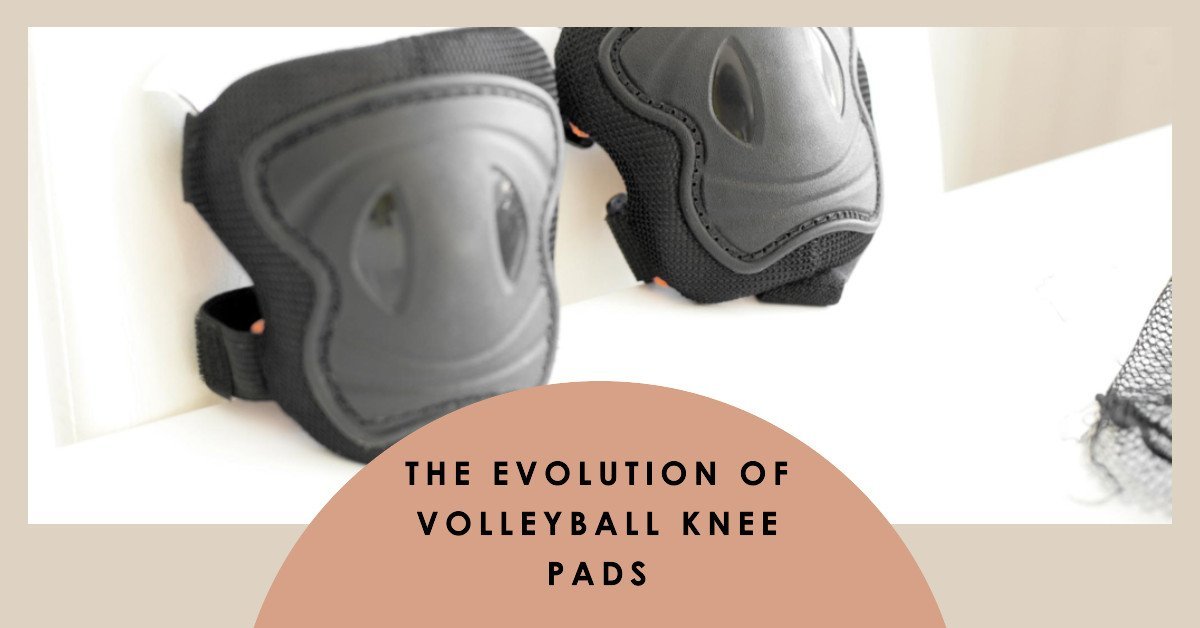“History of Volleyball Knee Pads” might sound like a niche topic, but there’s a fascinating journey behind those protective cushions. Dive into this guide to uncover when were knee pads invented in the world of sports. Trust us; it’s more gripping than a match-point rally!
Table of Contents

Volleyball, a sport known for its fast-paced action and high-flying athletes, has a rich history that spans over a century. As the game evolved, so did the equipment, with one of the most notable advancements being the introduction of volleyball knee pads. These protective gear pieces have become an essential part of the sport, ensuring players’ safety and enhancing their performance on the court.
Key Takeaways:
- Volleyball knee pads have been integral in preventing injuries and providing players with the confidence to dive and slide without fear.
- The evolution of knee pads has been influenced by technological advancements, player feedback, and the changing dynamics of the game.
- Modern knee pads are designed with a combination of comfort, protection, and style in mind.
When were volleyball knee pads invented?
Volleyball was invented in 1895 by William G. Morgan, a physical education instructor in Holyoke, Massachusetts. The game was initially called “Mintonette” and was designed as a less strenuous alternative to basketball. As the sport gained popularity, players started to realize the importance of protecting their knees from the hard floor, especially when diving for the ball.
In the early days, players would use makeshift solutions like wrapping their knees with cloth or using basic padding. However, these were not very effective and often resulted in injuries.
Introduction of the First Volleyball Knee Pads
The first official volleyball knee pads were introduced in the 1920s. These were made of leather and had a basic design. They provided some level of protection but were not very comfortable. As the sport grew in popularity, there was a demand for better protective gear.
In the 1950s, with the advent of new materials like foam and rubber, knee pads became more cushioned and comfortable. These new designs also offered better protection against impact.
History of Volleyball Knee Pads
The “History of Volleyball Knee Pads” traces back to the sport’s early days when players sought protection from hard court impacts. From rudimentary cloth wraps to today’s high-tech cushioning, these knee pads have evolved immensely, reflecting the sport’s dynamic progression. Dive into this captivating history and discover how simple protective gear became an indispensable part of the game.
Evolution of Design and Materials
Over the years, the design and materials used in volleyball knee pads have undergone significant changes. In the 1970s and 1980s, manufacturers started using synthetic materials like nylon and polyester, which made the pads lighter and more durable.
In the 1990s, with advancements in technology, knee pads became even more protective and comfortable. They were designed with multiple layers of foam, gel inserts, and breathable fabrics. This not only provided better protection but also ensured that players remained cool and dry during intense matches.
The Role of Player Feedback
Player feedback has been instrumental in the evolution of volleyball knee pads. Professional players, coaches, and trainers have always been at the forefront of suggesting improvements. Their insights into what works and what doesn’t have helped manufacturers design knee pads that cater to the specific needs of volleyball players.
For instance, players wanted knee pads that provided maximum protection without restricting movement. This led to the development of knee pads with ergonomic designs, flexible materials, and adjustable straps.
Modern Volleyball Knee Pads: A Blend of Comfort, Protection, and Style
Today’s volleyball knee pads are a perfect blend of comfort, protection, and style. They are made with high-tech materials that offer superior cushioning and impact resistance. Moreover, they come in various designs and colors, allowing players to choose knee pads that match their team colors or personal style.
| Year | Material Used | Features |
|---|---|---|
| 1920s | Leather | Basic protection |
| 1950s | Foam & Rubber | Cushioned and comfortable |
| 1990s | Synthetic Materials | Lightweight and durable |
| 2000s | High-tech Materials | Ergonomic design, breathable fabrics |
The Importance of Choosing the Right Knee Pads
Choosing the right knee pads is crucial for a volleyball player. The right pair not only protects the knees from injuries but also enhances the player’s performance on the court. Players should consider factors like fit, material, design, and brand reputation when selecting knee pads.

The Importance of Knee Pads in Other Sports
While volleyball was one of the pioneering sports to adopt knee pads, the importance of knee protection is recognized in many other sports today. Sports like skateboarding, rollerblading, and even some forms of dance have adopted knee pads as a standard piece of protective equipment.
In these sports, just like in volleyball, the knees are constantly at risk. A fall, a wrong landing, or even a collision can result in serious knee injuries. Knee pads provide a layer of protection, reducing the risk of bruises, cuts, and more serious injuries.
The Future of Volleyball Knee Pads
The evolution of volleyball knee pads is far from over. As technology continues to advance, we can expect to see even more innovations in knee pad design and materials. Future knee pads might be lighter, more durable, and even more protective than today’s versions.
Manufacturers are constantly researching and experimenting with new materials and designs. With the feedback from professional players and advancements in material science, the future of volleyball knee pads looks promising.
Frequently Asked Questions
Are knee pads mandatory in professional volleyball?
How often should I replace my knee pads?
Can I use volleyball knee pads for other sports?
Who invented volleyball?
Last update on 2025-12-26 / Affiliate links / Images from Amazon Product Advertising API








